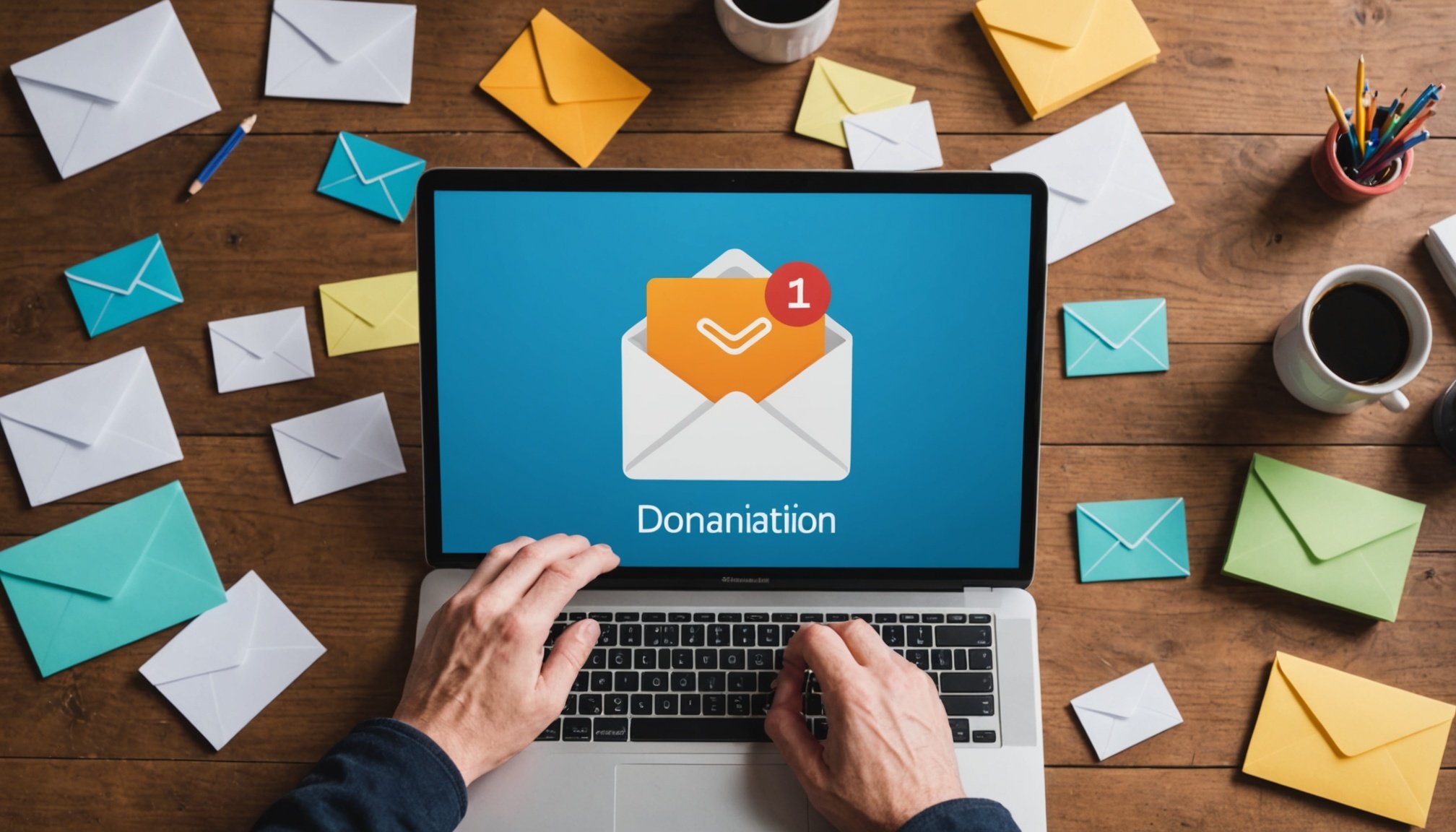Maximizing Donations: Effective Email Campaign Strategies for UK Nonprofits
Understanding Your Audience: The Foundation of Successful Email Campaigns
When it comes to crafting effective email campaigns for nonprofits, understanding your audience is the cornerstone of success. This involves more than just knowing the demographics of your donors; it requires a deep dive into their psychographics, including their wants, needs, desires, and challenges.
To create detailed audience personas, nonprofits can use various tools and tactics. Here are some steps to follow:
In parallel : Maximizing Student Recruitment: Effective Strategies for UK Music Schools to Utilize Video Content
-
Create Donor Personas: Develop profiles for each donor segment, including demographic information like age, income, and location, as well as psychographic details such as their values and motivations. This helps in tailoring your messaging and outreach efforts.
-
Utilize Data: Analyze past donation patterns, event participation, and engagement metrics to inform your personas. This data can be gathered through donor surveys, which are an excellent way to start learning about your donor groups.
Also to see : Transform your online presence with leeds' leading seo agency
-
Surveys and Feedback: Conduct surveys to gather insights and opinions from your donors. This feedback can help refine your strategies and ensure that your messaging resonates with your audience.
Here is an example of how to structure your donor personas:
| Persona | Demographics | Psychographics | Communication Preferences |
|---|---|---|---|
| Young Professional | Age: 25-35, Income: £40,000-£60,000 | Values social justice, active on social media | Prefers email and social media updates |
| Retiree | Age: 65+, Income: £20,000-£40,000 | Values community service, reads local newspapers | Prefers direct mail and occasional emails |
| Corporate Donor | Age: 35-50, Income: £60,000+ | Values corporate social responsibility, active on LinkedIn | Prefers professional emails and LinkedIn updates |
Crafting Compelling Content: The Heart of Email Marketing
Effective email campaigns for nonprofits rely heavily on compelling content that resonates with the audience. Here are some strategies to make your content stand out:
Personalization and Storytelling
Personalization is key to building a connection with your donors. Tailor your emails to address donors by name and reference their past contributions. This fosters a sense of appreciation and encourages continued support.
Storytelling is another powerful tool. Share personal narratives or success stories that demonstrate the impact of donations. For instance, telling the story of how your organization helped a community or an individual can inspire donors emotionally and motivate them to contribute.
Clear Calls-to-Action and Urgency
Be specific in your ask and create a sense of urgency. Provide clear reasons why donors should contribute and explain the consequences if the funds are not raised within a certain timeframe. This can be framed positively, highlighting what will be achieved if the goal is met.
Here is an example of a compelling email content:
Subject Line: Help Us Make a Difference This Giving Day!
Body:
Dear [Donor’s Name],
We hope this email finds you well. As we approach our annual Giving Day, we wanted to share a story that highlights the impact of your generosity.
Last year, your donation helped us provide clean water to a rural community in Cambodia. Here’s a story from Srey Krem, one of the beneficiaries:
“Thanks to the BioSand filters provided by [Your Organization], my family now has access to clean water. This has significantly improved our health and quality of life.”
This year, we aim to expand our project to another community. Your donation can help us achieve this goal. Here’s how you can help:
- Current Situation: We need £10,000 to install new water filters.
- Reason for Fundraising: To provide clean water to another rural community.
- Desired Outcome: Improved health and quality of life for hundreds of families.
Every donation counts, and we urge you to contribute by [Specific Date] to help us meet our goal.
Thank you for your continued support.
Best regards,
[Your Name]
Leveraging Email Marketing Automation and Templates
Email marketing automation is a game-changer for nonprofits, allowing for efficient and consistent communication without constant manual intervention.
Automated Emails
Integrate your email marketing with your donor management system to streamline communication. Automated emails can be set up for various scenarios, such as:
- Welcome Emails: For new donors, providing an introduction to your organization and its mission.
- Thank-You Emails: Immediately after a donation, expressing gratitude and providing a receipt.
- Follow-Up Emails: To update donors on the impact of their contributions and encourage further engagement.
Customizable Email Templates
Use customizable email templates to maintain a consistent look and feel across all your communications. These templates can be tailored for different segments of your audience, ensuring efficiency and coherence.
Here are some best practices for email marketing automation:
- Segment Your Email List: Divide your email list based on donor behavior, preferences, and past interactions to ensure targeted messaging.
- Monitor Engagement Metrics: Track open rates, click-through rates, and conversion rates to gauge the effectiveness of your email campaigns and refine your approach.
Engaging Your Audience Through Multi-Channel Marketing
Effective fundraising campaigns often involve a multi-channel approach, combining email marketing with other digital and traditional methods.
Social Media and Community Influence
Social media platforms are powerful tools for promoting your Giving Day or fundraising campaigns. Here are some strategies to leverage social media effectively:
- Create Shareable Content: Use engaging visuals, videos, and stories that can be easily shared by your followers.
- Utilize Hashtags: Relevant hashtags can increase the visibility of your posts and attract new supporters.
- Engage with Your Audience: Use live updates and interactive posts to keep your audience engaged and informed.
Here is an example of how to integrate social media into your campaign:
Facebook Post:
“Today is our Giving Day Help us raise £10,000 to provide clean water to another rural community. Every donation counts, and you can make a difference. Share this post with your friends and family to help us spread the word. #GivingDay #CleanWater #MakeADifference”
Direct Mail and Volunteer Opportunities
While email and social media are crucial, direct mail and volunteer opportunities can also be highly effective.
- Direct Mail: Send personalized letters or postcards to your donors, especially those who prefer traditional communication methods. This can be particularly effective during the holiday season.
- Volunteer Opportunities: Invite donors to volunteer and engage with your organization beyond donations. This can include events, webinars, or advisory board participation.
Analyzing and Learning from Successful Campaigns
Analyzing successful campaigns can provide valuable insights into what works and what doesn’t.
Case Studies and Campaign Analysis
Look at case studies of successful nonprofit crowdfunding campaigns to identify common elements that contributed to their success. These often include:
- Compelling Narrative: A strong emotional connection through storytelling.
- Strategic Use of Social Media: Regular updates and interactive content.
- Clear Communication of Impact: Transparent updates on how donations are used and the progress of initiatives.
Here is a comparison table of successful campaign strategies:
| Strategy | Description | Example |
|---|---|---|
| Compelling Narrative | Use personal stories or testimonials to create an emotional connection | Water for Cambodia’s BioSand filter campaign |
| Strategic Use of Social Media | Engage with your audience through regular updates and interactive content | Using Facebook and Instagram for live updates |
| Clear Communication of Impact | Provide transparent updates on how donations are used and the progress of initiatives | Regular newsletters and impact reports |
| Realistic Goals | Set achievable funding targets to maintain donor enthusiasm | Breaking down large goals into smaller, manageable targets |
Donor Engagement Beyond the Campaign
Maintaining connections with donors post-campaign is crucial for sustaining nonprofit initiatives.
Post-Campaign Strategies
- Thank and Recognize Donors: Send personalized thank-you notes or public acknowledgments to make donors feel valued and appreciated.
- Regular Updates: Keep donors informed about how their donations are being used and the progress of initiatives. Share success stories or challenges faced to keep donors invested in the cause.
Here are some practical tips for post-campaign engagement:
- Ongoing Communication: Schedule regular communications, such as newsletters or annual impact reports, to maintain transparency and trust.
- Exclusive Events: Host events or webinars exclusively for donors to provide opportunities for deeper involvement and feedback.
Maximizing donations through effective email campaigns requires a multifaceted approach that includes understanding your audience, crafting compelling content, leveraging email marketing automation, engaging your audience through multi-channel marketing, analyzing successful campaigns, and maintaining donor engagement beyond the campaign.
By implementing these strategies, UK nonprofits can enhance their fundraising efforts, build stronger relationships with their donors, and ultimately make a greater impact in their communities.
Additional Resources:
- Email Marketing Templates: Use customizable templates to maintain consistency across all your email communications.
- Social Media Guides: Utilize guides on how to effectively use social media platforms for fundraising.
- Donor Personas: Develop detailed profiles for each donor segment to guide your messaging and outreach efforts.
By following these best practices and continuously refining your strategies based on feedback and analytics, you can ensure that your email campaigns are not only effective but also engaging and impactful.






